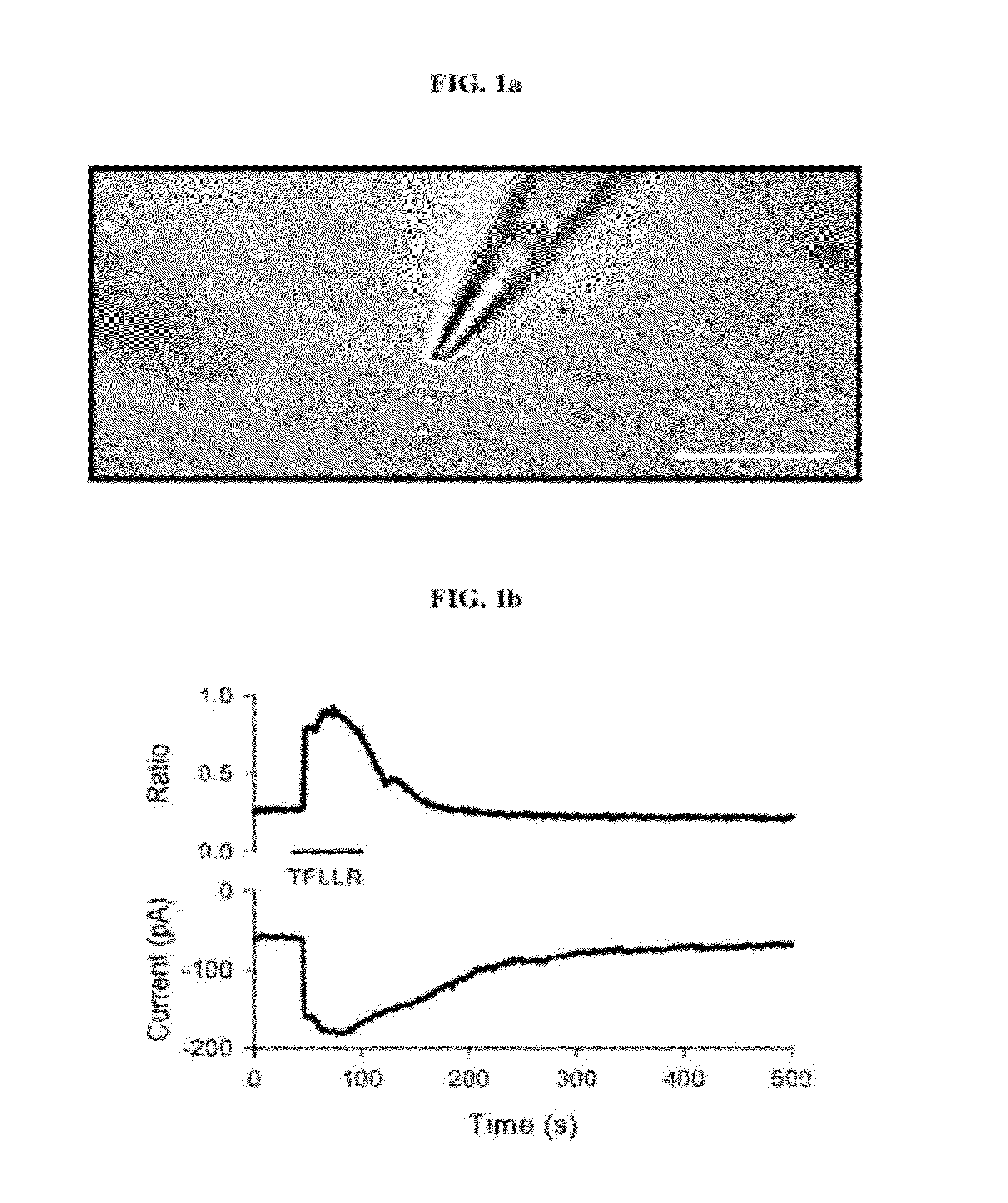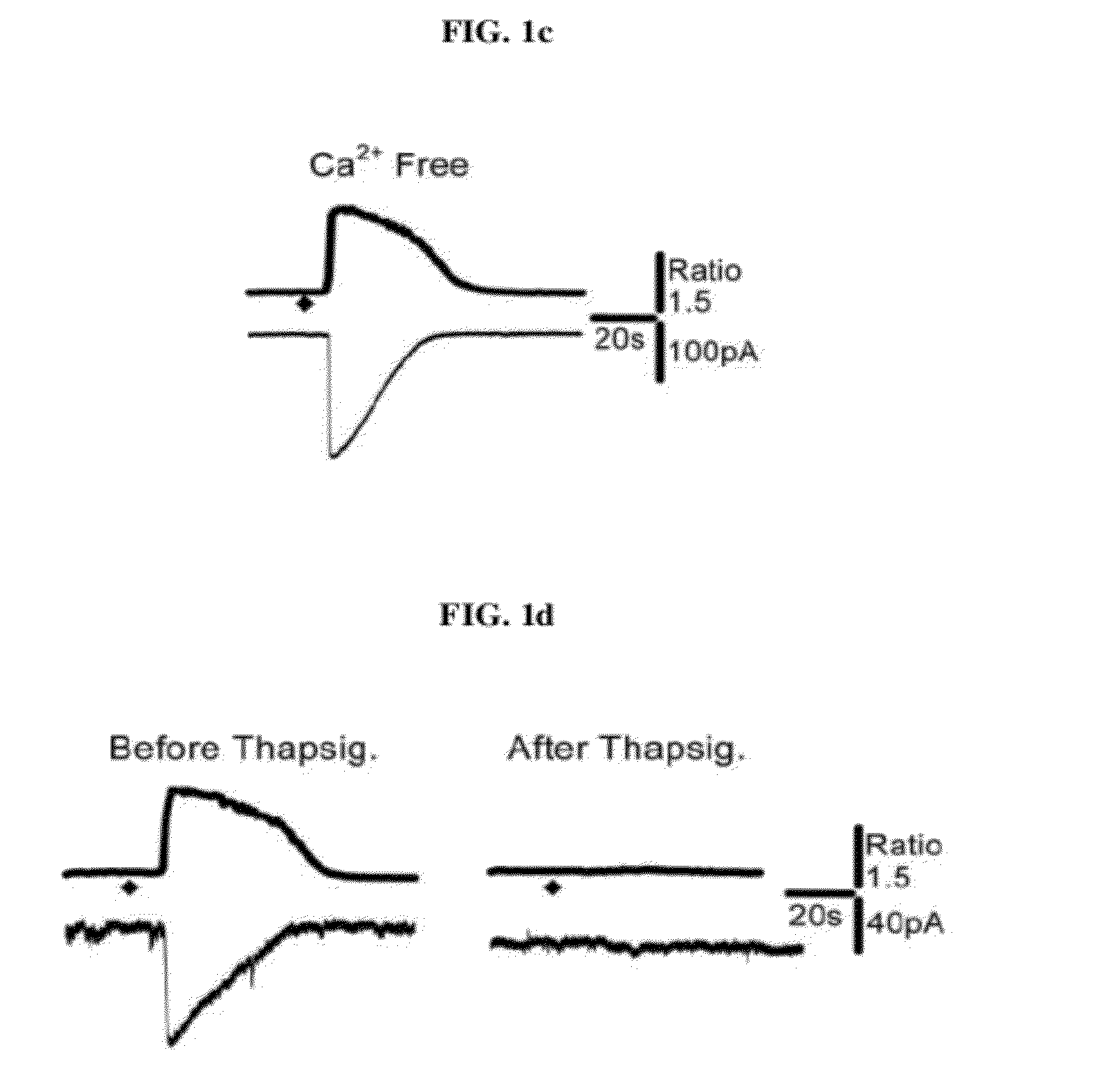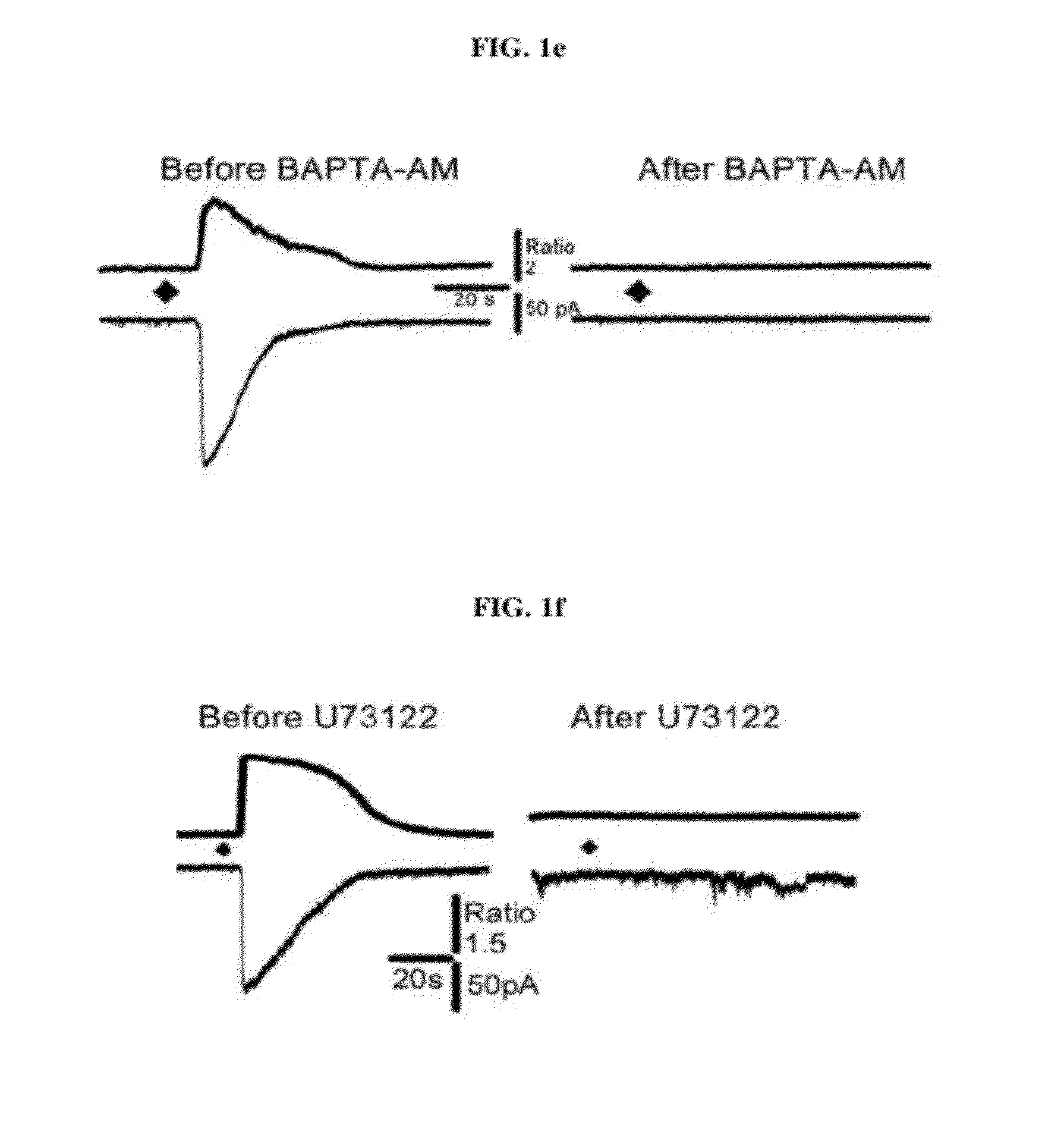Regulation of neurotransmitter release through anion channels
a neurotransmitter and anion channel technology, applied in the field of anion channels, can solve the problems of astrocyte gliotransmitter release, which cannot be explained by vesicular exocytosis, and achieve the effect of regulating the release of neurotransmitter through anion channels
- Summary
- Abstract
- Description
- Claims
- Application Information
AI Technical Summary
Benefits of technology
Problems solved by technology
Method used
Image
Examples
example 1
Example 1
Culture of HEK293T Cells and Astrocytes of Cortex of Mouse Brain
[0073]1.1. mBest1 Cloning
[0074]For the cloning of full-length mouse bestrophin 1 (mBest1) cDNA, total RNA was purified from cultured astrocytes or testis from adult male mice (C57BL / 6), and cDNA was synthesized using Super Script III reverse transcriptase (Invitrogen) and amplified by PCR using 21 bp primers starting and ending coincident with the open reading frame sequences based on NCBI database cDNA [GenBank accession numbers NM—011913 XM—129203, SEQ ID NO: 1]. Resulting PCR products were cloned into a pGEM-T easy vector (Promega) and sequenced.
[0075]The RT-PCR primers used to check expression of mBest1, 2, and 4 from cDNA were as followings:
(SEQ ID NO: 5)mBest1-F:5′-aggacgatgatgattttgag-3′,(SEQ ID NO: 6)mBest1-R:5′-ctttctggtttttctggttg-3′,(SEQ ID NO: 7)mBest2-F:5′-TCGTCTACACCCAGGTAGTC-3′,(SEQ ID NO: 8)mBest2-R:5′-GAAAGTTGGTCTCAAAGTCG-3′,(SEQ ID NO: 9)mBest4-F:5′-AAAGGCTACGTAGGACATGA-3′,(SEQ ID NO: 10)mBest...
example 2
Measurement of Ca2+ and Glutamate
[0088]2.1. Recording Solutions for Simultaneous Ca2+ Imaging and Perforated Patch Clamp Recording
[0089]The External solution was comprised of (in mM) 150 NaCl, 10 HEPES, 3 KCl, 2 CaCl2, 2 MgCl2, 5.5 glucose, at pH 7.3 (˜320 mOsm). For voltage clamp recordings, the internal solution contained 25 μg / ml gramicidin D and (in mM) 75 Cs2SO4, 10 NaCl, 0.1 CaCl2, and 10 HEPES, at pH 7.1 (˜310 mOsm). For current clamp recordings, the internal solution contained 25 μg / ml gramicidin D and (in mM) 75 K2SO4, 10 KCl, 0.1 CaCl2, and 10 HEPES, at pH 7.1 (˜310 mOsm). Pipette resistances ranged from 5 to 8 MΩ. For perforated patch clamp, it took 20 to 30 min to achieve acceptable perforation, with final series resistances ranging from 15 to 40 MΩ.
[0090]2.2. Whole-Cell Patch Clamp
[0091]Patch pipettes which have 3-6MΩ of resistance are filled with the standard intracellular solution. Current voltage curves were established by applying 100- or 200-ms-duration voltage ram...
example 3
Verification of Functional Expression of CAACs in Astrocytes
[0098]Astrocytic Gq-coupled receptors such as P2Y receptor, bradykinin receptor, and protease activated receptor-1 (PAR-1) are known to induce a transient increase in the intracellular Ca2+ concentration ([Ca2+]i), which in turn leads to glutamate release from astrocytes by a Ca2+ dependent mechanism. The present inventors have previously shown that glutamate release in this fashion from astrocytes strengthens the synaptic NMDA receptor function by relieving Mg2+-dependent pore block of NMDA receptors (Lee, C. J. et al. Astrocytic control of synaptic NMDA receptors. J Physiol 581, 1057-81 (2007). However, the mechanism by which PAR1 activation facilitates glutamate release following an increase of astrocytic [Ca2+]i has not been known. Therefore, using PAR1 activation as a tool for selective induction of astrocytic [Ca2+]i increase, the inventors investigated the Ca2+-dependent downstream processes leading to glutamate rele...
PUM
| Property | Measurement | Unit |
|---|---|---|
| time | aaaaa | aaaaa |
| voltage | aaaaa | aaaaa |
| voltage | aaaaa | aaaaa |
Abstract
Description
Claims
Application Information
 Login to View More
Login to View More - R&D
- Intellectual Property
- Life Sciences
- Materials
- Tech Scout
- Unparalleled Data Quality
- Higher Quality Content
- 60% Fewer Hallucinations
Browse by: Latest US Patents, China's latest patents, Technical Efficacy Thesaurus, Application Domain, Technology Topic, Popular Technical Reports.
© 2025 PatSnap. All rights reserved.Legal|Privacy policy|Modern Slavery Act Transparency Statement|Sitemap|About US| Contact US: help@patsnap.com



